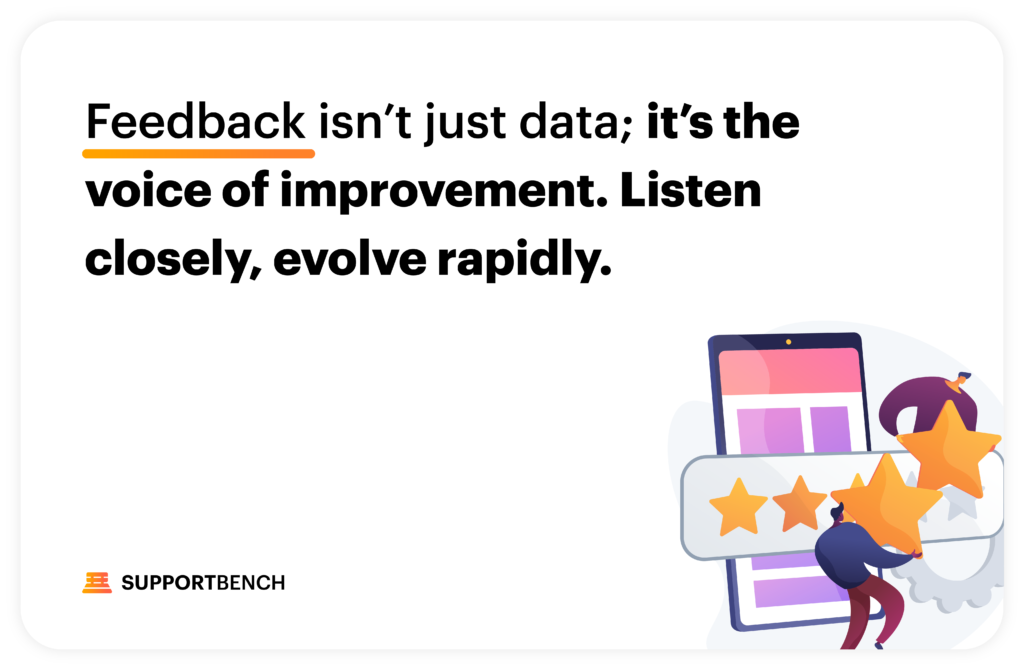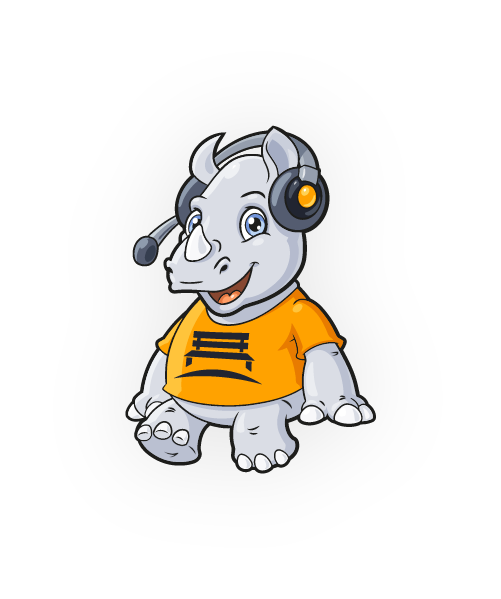Customer Satisfaction (CSAT) is the lifeblood of support teams, helping to fine-tune processes and improve the overall customer experience. However, as critical as CSAT surveys are, generating significant response rates remains a challenge. Dive into seven lesser-known yet impactful secrets to elevate your CSAT survey response rates in the enterprise landscape.

- Harnessing Behavioral Science Techniques
The world of behavioral science offers a treasure trove of insights into why customers do (or don’t) respond to surveys. Firstly, consider the principle of reciprocity. Giving customers something small — a tip, insight, or discount — can encourage them to return the favor by completing the survey.
Next, frame the survey to make the customer feel it’s tailored for them. Personalization isn’t just for marketing; it matters in feedback too. Addressing the customer by name and referencing specific interactions can lead to higher engagement.
Lastly, scarcity and urgency can be powerful motivators. Indicating that the survey is open for a “limited time” or to the “first X respondents” can trigger faster and higher responses.
- Immersive Multi-Channel Experiences
In the age of omni-channel customer touchpoints, sticking to email alone for your CSAT surveys can limit your reach. Instead, think of alternative channels such as in-app notifications, SMS, or even post-interaction pop-ups.
By diversifying channels, you are likely to reach a broader customer segment. However, remember to balance frequency to avoid overwhelming the customer. Syncing your approach across channels, much like Supportbench’s unified email management, can ensure seamless communication without over-saturation.
- Leveraging AI-Powered Predictive Analysis
AI has transformed the way enterprises approach customer support, from sentiment analysis to chatbots. Its potential in predicting the best times, channels, and content for CSAT surveys remains underexplored. AI can analyze past interactions, response times, and more to determine when a customer is most likely to respond to a survey. Such targeted approaches can drastically increase response rates.
This predictive strategy is reminiscent of how Supportbench leverages AI, not just in customer interactions but also in ensuring optimal customer experiences, from start to finish.
- Contextual Micro-Surveys Over Lengthy Questionnaires
“One size fits all” doesn’t resonate with today’s customers. Long, generic surveys might be comprehensive, but they can be a deterrent. Instead, focus on micro-surveys, tailored to the specific interaction you’re seeking feedback on.
Say a customer interacted with your knowledge base and then with your chat support. Their survey should ideally focus on these touchpoints, not on their overall experience with your brand. Detailed, contextual questions can offer deeper insights while respecting your customers’ time.
- Promote a Feedback-Driven Culture
According to Bill Gates, “We all need people who will give us feedback. That’s how we improve.” Promoting a culture where feedback is valued and acted upon can drive more genuine responses. Customers need to see that their feedback brings tangible changes.
Showcase improvements made based on previous feedback, not just internally but to your customers. This culture of continuous improvement underscores the ethos of Supportbench – where customer support operations drive organizational success.
- Leverage Peer Pressure Positively
As per the social proof principle, people are influenced by the actions of others. Sharing statistics like “70% of customers found our last update helpful based on feedback” can motivate others to participate.
Additionally, you can quote industry leaders on the importance of feedback. For instance, Jeff Bezos once mentioned, “If you make customers unhappy in the physical world, they might each tell 6 friends. If you make customers unhappy on the Internet, they can each tell 6,000 friends.” Such quotes emphasize the weight of each customer’s feedback, urging them to contribute.
- Gamification and Instant Rewards
Gamifying the survey experience can pique interest and increase response rates. Simple things, like a progress bar, can encourage customers to complete the survey. Instant rewards, such as badges, points, or even tangible incentives, can be a significant pull.
However, the key lies in ensuring these rewards don’t skew genuine feedback. Transparency in communication and maintaining the core intent of understanding customer sentiments should always remain the priority.
In the constantly evolving realm of customer support, enhancing CSAT survey response rates is crucial… for most, at least. While the landscape presents its challenges, secrets like those above, combined with a platform like Supportbench that emphasizes seamless support and data-driven innovation, can lead to profound positive shifts. Remember, every feedback is a step closer to perfection, and with the right strategies, you can ensure your steps are swift and impactful. But not everyone is focussing on the importance of these response rates.
The consequence of neglecting CSAT response rates

Customer satisfaction (CSAT) isn’t just a metric—it’s a lifeline for support teams. So, what happens when companies overlook the importance of this key performance indicator or fail to elevate their response rates? Dive into seven impactful secrets to optimize CSAT survey response rates and understand the severe ramifications of neglecting this vital aspect.
Harnessing Behavioral Science Techniques
Behavioral science offers insights into customer behavior. Businesses can effectively encourage survey participation by leveraging principles like reciprocity, personalization, scarcity, and urgency. However, failing to capitalize on behavioral motivators can lead to lackluster survey participation, resulting in a skewed or incomplete understanding of customer sentiments. Over time, this can manifest as deteriorating customer relationships and declining loyalty.
Immersive Multi-Channel Experiences
Moving beyond traditional email surveys to in-app notifications, SMS, or post-interaction pop-ups can maximize reach. However, relying solely on one channel, such as email, can lead to missing valuable feedback from diverse customer segments. This single-channel approach may alienate those who prefer other communication methods, ultimately compromising the holistic view of customer satisfaction.
Leveraging AI-Powered Predictive Analysis
AI’s power in predicting optimal times, channels, and content for CSAT surveys is revolutionary. Whereas, not utilizing AI can mean sticking to outdated methods, leading to inefficiencies and missed opportunities. Over time, customer support can become reactive rather than proactive, causing a lag in addressing emerging issues.
Contextual Micro-Surveys Over Lengthy Questionnaires
Contextual and concise surveys resonate more with today’s customer, delivering precise insights into specific interactions. Yet, lengthy, generalized surveys can deter participation, leaving businesses with inadequate data. This can translate to ill-informed decisions, impacting the overall customer experience and potentially driving customers away.
Promote a Feedback-Driven Culture
Creating a culture where feedback is valued and acted upon can elicit genuine and frequent responses. But, if customers feel their feedback falls on deaf ears, they’re less likely to participate in future surveys or even engage with the company. This detachment can foster a negative perception, causing a ripple effect where new customers are influenced by existing customer disengagement.
Leverage Peer Pressure Positively
The power of social proof and influential industry quotes can urge participation, emphasizing the weight and impact of feedback. And without harnessing this influential strategy, businesses miss out on a potent motivator. This oversight can not only lead to reduced survey participation but also affect the perceived importance and credibility of the feedback process.
The TRUE Cumulative Impact
Neglecting to boost CSAT survey response rates doesn’t just affect a single facet of the business. It can lead to an information vacuum where support departments operate based on assumptions rather than concrete data. This gap can translate to misguided strategies, inefficient allocation of resources, and alienation of the customer base. In the long run, a compromised support department can severely dent a company’s reputation, profitability, and growth.
In the intricate dance of customer support, CSAT surveys are pivotal. By leveraging secrets like those above and a platform like Supportbench that emphasizes seamless support, businesses can remain in step with customer sentiments, ensuring that their strategies are well-informed, agile, and effective. Remember, an engaged customer is a retained customer. Don’t let your CSAT strategies be an afterthought.











